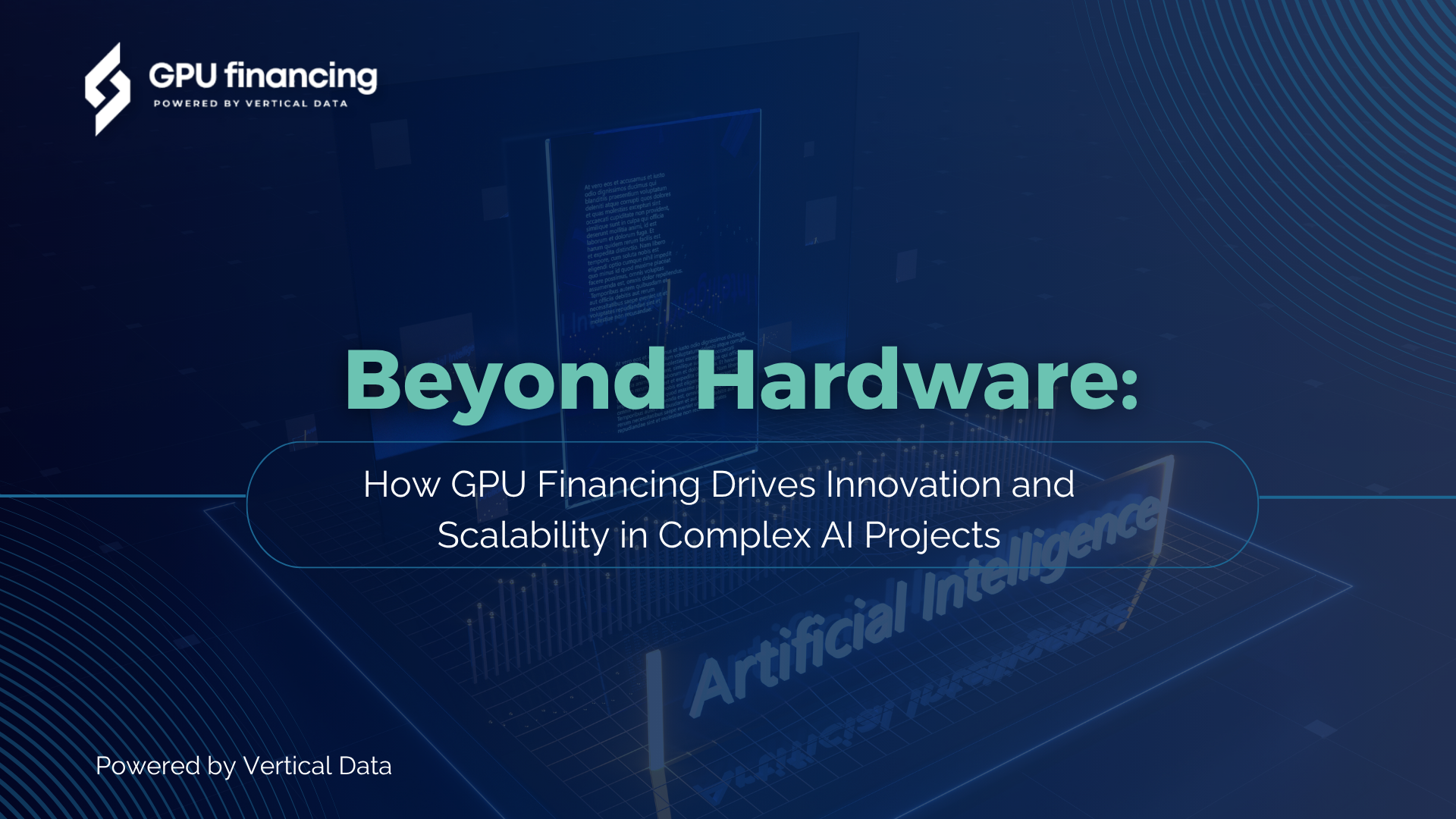In the race for AI dominance, the conversation often gravitates toward hardware specifications; teraflops, memory bandwidth, and interconnect speeds. While these metrics are important, strategic leaders understand that transformative AI projects are not defined by silicon alone. They are defined by their ability to scale, experiment, and innovate continuously.
The traditional model of outright hardware purchasing (CapEx) is fundamentally misaligned with the dynamic nature of AI development. It forces organizations into massive, long-term bets on technology that, as industry leaders like NVIDIA now confirm, is advancing on a yearly cadence. This financial rigidity creates an invisible barrier that extends far beyond the initial price tag: it stifles innovation.
This is where a modern approach to GPU financing becomes a strategic enabler. It allows organizations to move beyond simply owning hardware and focus on what truly matters: driving results.
From Prediction to Adaptation: Aligning Costs with the AI Project Lifecycle
Complex AI initiatives are rarely linear. They begin with an R&D phase, where experimentation is paramount and compute needs are often modest but varied. They then move to large-scale model training, which demands immense, concentrated computing power. Finally, they enter the inference and deployment stage, where efficiency and constant availability become critical.
- The CapEx Problem: A massive upfront investment forces a difficult choice: either over-provision from day one, leaving expensive resources idle during R&D, or under-provision, creating insurmountable bottlenecks during the crucial training phase.
- The Flexible Financing Solution: A strategic financing model allows companies to right-size their compute capacity to the actual project phase. Teams can start with a smaller cluster for experimentation and seamlessly scale to hundreds of GPUs when a promising model is ready for full-scale training. This approach transforms infrastructure spending from a fixed burden into a dynamic investment that directly mirrors value creation.
Eliminating the “Opportunity Cost” of Innovation
The true cost of hardware obsolescence isn’t just the asset’s depreciation, which can reach a staggering 40-60% within the first two years. The more profound cost is the opportunity cost. Every dollar locked into depreciating hardware is a dollar not invested in hiring top AI talent, acquiring proprietary datasets, or exploring new business models.
Research from institutions like MIT has shown that AI-leading firms consistently reinvest more in talent and processes than their competitors. Flexible financing frees up critical capital, shifting it from a CapEx burden to a strategic OpEx investment. This directly fuels the real engines of innovation: people and ideas.
Unlocking Unprecedented Scale for Grand-Challenge Problems
Large Language Models (LLMs) and generative AI have redefined what “scale” means. Training a state-of-the-art model is no longer a matter of using a few dozen GPUs; it often requires thousands of accelerators running in parallel for weeks or even months.
- The CapEx Barrier: For most organizations, acquiring and maintaining a cluster of thousands of the latest GPUs is financially and logistically prohibitive. Even if they could afford it, they would be locked into a rigid infrastructure, unable to adapt when the next hardware generation delivers a proven 30-50% performance leap.
- The Financing Advantage: A financing partner aggregates demand and maintains direct relationships with manufacturers, providing access to large-scale clusters that a single company could not justify building. More importantly, the model allows clients to treat technology upgrades as a feature of the service. This ensures their most ambitious projects always run on the most competitive hardware, without the dead weight of a multi-million dollar write-off.
Fostering a Culture of “Safe-to-Fail” Experimentation
Breakthroughs in AI are built on a foundation of failed experiments. For every successful model that reaches production, dozens are discarded. In a CapEx-driven environment, the high cost of hardware can create a culture of risk aversion. Teams may hesitate to test bold but computationally expensive model architectures, fearing they will “waste” precious and costly GPU cycles.
Flexible financing fundamentally changes this dynamic. By converting the cost of hardware into a predictable operating expense, it creates a financially secure sandbox. AI teams gain the freedom to experiment, fail fast, and pivot without the pressure of justifying a seven-figure capital investment. This freedom is the true catalyst for disruptive discovery.
Conclusion: Your Infrastructure as a Strategic Service
Viewing GPU financing as merely a payment plan is missing the bigger picture. It’s about transforming your infrastructure from a static, depreciating asset into a dynamic, strategic service.
By embracing a flexible financing model, organizations are not just optimizing cash flow. They are buying agility, eliminating the risk of technological obsolescence, and, most importantly, unlocking the capital and the mindset required to drive relentless innovation in their most complex AI endeavors.
Is your infrastructure strategy accelerating your innovation, or is it holding you back? Let’s talk about designing a financing plan that matches the scale and ambition of your AI vision.
